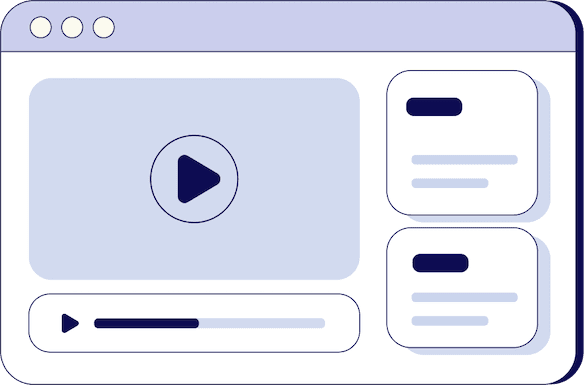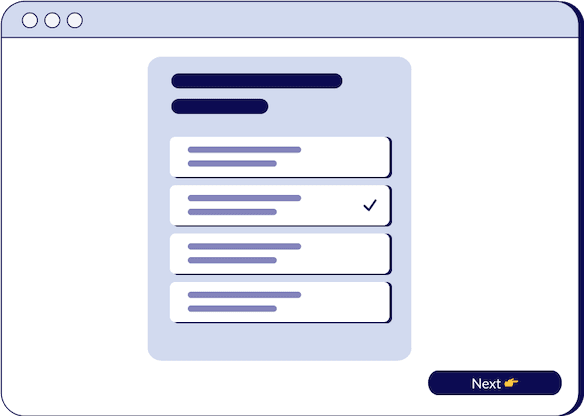
Conditions Vs. Objections
Izzy Guarino
Head of Product

- duration
- 9 min
- Average Score
- 85%
- Stars
- 5
In the dynamic realm of sales, the prowess of sales representatives plays a pivotal role in sealing the deal. Every seasoned sales rep understands the intricate dance between sales conditions and sales objections, recognizing that mastering this delicate balance is the key to achieving unparalleled success.
The Fundamental Divide: Sales Conditions vs. Sales Objections
Defining Sales Conditions
Sales conditions serve as the bedrock upon which successful sales transactions are built. These are the favorable circumstances, prerequisites, or prerequisites that align in favor of the sales rep. It's akin to having a tailwind propelling a sailboat forward, making the journey smoother and more efficient.
Markdown tip: Sales Conditions are favorable circumstances for the sales rep.
Understanding and leveraging sales conditions is crucial for any sales professional aiming to optimize their performance. Recognizing these conditions empowers the sales rep to navigate the sales process more strategically, identifying opportune moments to capitalize on favorable circumstances.
External reference link: Mastering Sales Conditions
Deciphering Sales Objections
On the flip side, sales objections represent the hurdles, challenges, or concerns raised by potential customers. These objections act as barriers that the sales rep must overcome to progress towards a successful close. Navigating objections requires finesse, persuasion, and a deep understanding of the customer's needs and concerns.
Markdown tip: Sales Objections are hurdles or challenges that sales reps must overcome.
Effectively addressing objections involves active listening, empathizing with the customer's perspective, and crafting tailored responses that assuage concerns. A skilled sales rep transforms objections into opportunities, turning potential roadblocks into stepping stones towards a successful sale.
External reference link: Overcoming Common Sales Objections
Strategic Approaches to Sales Conditions
1. Building Rapport
Building a strong rapport with potential clients creates an environment conducive to favorable sales conditions. Sales reps should focus on establishing trust, understanding client needs, and demonstrating how their product or service aligns seamlessly with the client's objectives.
Markdown tip: Building rapport is essential for creating favorable sales conditions.
A recent study by Harvard Business Review emphasizes the importance of building strong relationships in sales, citing that customers are more likely to engage with and buy from salespeople they trust.
2. Leveraging Social Proof
Integrating social proof into the sales process enhances credibility and reinforces favorable sales conditions. This can include testimonials, case studies, or success stories that highlight previous satisfied customers and successful implementations of the product or service.
Markdown tip: Social Proof reinforces credibility and creates favorable sales conditions.
Sales reps can strategically weave social proof into their presentations or discussions, providing tangible evidence of the value their product or service brings to the table.
Tackling Sales Objections Head-On
1. Active Listening and Empathy
Addressing objections begins with active listening and empathizing with the concerns raised by the customer. Sales reps should refrain from immediately countering objections and instead focus on understanding the root cause of the objection.
Markdown tip: Active listening and empathy are key to overcoming sales objections.
A study published in the Journal of Personal Selling & Sales Management underscores the positive correlation between active listening and successful objection handling in sales.
2. Customized Solutions
Tailoring solutions to address specific objections demonstrates a commitment to meeting the customer's unique needs. Sales reps should possess in-depth product knowledge and the ability to articulate how their offering directly addresses the concerns raised.
Markdown tip: Customized solutions showcase a commitment to meeting customer needs.
In a Forbes article, successful entrepreneurs emphasize the importance of customization in sales, highlighting its role in overcoming objections and building lasting customer relationships.
Actionable Steps: Distinguishing Between Sales Conditions and Sales Objections in a Sales Call
1. Proactive Identification: Recognize and Catalog Conditions
Sales reps should proactively identify and catalog sales conditions during the initial stages of a sales call. This involves keen observation and active listening to discern factors that work in favor of the sale. Markdown tip: Proactive Identification is crucial for recognizing favorable conditions.
Tasks to undertake:
- Develop a checklist of common sales conditions based on product/service features.
- Integrate open-ended questions to uncover specific customer needs and preferences.
- Utilize customer relationship management (CRM) tools to track and analyze historical data for potential patterns.
2. Objection Anticipation: Anticipate and Prepare for Objections
Anticipating objections is a proactive strategy that empowers sales reps to address concerns before they arise. Markdown tip: Objection Anticipation involves strategic preparation.
Tasks to undertake:
- Conduct thorough market research to identify common objections within the industry.
- Role-play objection scenarios during team training sessions to enhance preparedness.
- Create objection-specific response templates to streamline communication.
3. Dynamic Adaptation: Differentiate and Adjust in Real-Time
In the heat of a sales call, the ability to dynamically differentiate between conditions and objections is paramount. Markdown tip: Dynamic Adaptation is the key to adjusting strategies in real-time.
Tasks to undertake:
- Implement a real-time note-taking system during sales calls to track emerging conditions and objections.
- Establish a communication protocol within the sales team for swift information exchange.
- Continuously update objection-handling strategies based on evolving market trends and customer feedback.
By incorporating these actionable steps into their sales approach, reps can elevate their effectiveness in distinguishing between sales conditions and objections. This strategic differentiation not only enhances the overall sales process but also equips reps with the agility to navigate diverse scenarios and secure successful outcomes.
In the realm of sales, success hinges on the ability to navigate the intricate dance between sales conditions and sales objections. Sales reps who adeptly recognize and leverage favorable conditions, while skillfully addressing objections, stand poised to achieve unparalleled success.
Distinguishing the Essence: Sales Conditions vs. Sales Objections
Sales conditions and sales objections are two pivotal facets in the intricate dance of sales, each playing a distinct role in shaping the trajectory of a deal. Sales conditions are akin to tailwinds, propelling the sales rep forward with favorable circumstances that pave the way for a smoother transaction. These conditions may include a prospect's pre-existing positive perception of the product, a well-established rapport, or an alignment between the product's features and the customer's needs. On the other hand, sales objections act as the headwinds, introducing challenges and concerns that demand adept handling. These objections are the hurdles a sales rep must navigate, arising from customer hesitations or specific needs that must be addressed to progress toward a successful close. Understanding the nuanced difference between these two dynamics is crucial for sales professionals, as it empowers them to strategically leverage conditions while adeptly overcoming objections, ultimately steering the sales journey towards success.
As the landscape of sales continues to evolve, staying abreast of these dynamics is paramount. By honing their skills in understanding and navigating both sales conditions and objections, sales reps position themselves as invaluable assets in the competitive world of sales. Watch the recommended session to embark on a journey of continuous improvement and mastery in the art of sales.
How Triple Session works
Training, Testing, & Feedback
Triple Session's proven formula accelerates your sales performance through consistent, organized practice, backed by measurable results.

Bite-Sized Knowledge
Our expert-led video sessions simplify complex sales concepts into easy-to-digest 5-15 minute videos for better retention.

Test Your Understanding
After each session, there will be a quiz to test your understanding and help you improve on any areas that need more attention.

Evaluate and Grow
Get progress snapshots after each quiz to track your improvements and achieve your sales mastery goals.